
The Taos art colony was an art colony founded in Taos, New Mexico, by artists attracted by the culture of the Taos Pueblo and northern New Mexico. The history of Hispanic craftsmanship in furniture, tin work, and other mediums also played a role in creating a multicultural tradition of art in the area.

Harold Witter Bynner, also known by the pen name Emanuel Morgan, was an American poet and translator. He was known for his long residence in Santa Fe, New Mexico, and association with other literary figures there.
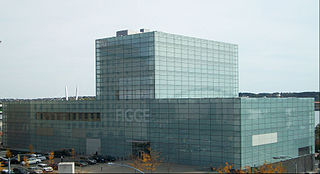
The Figge Art Museum is located on the north bank of the Mississippi River in Davenport, Iowa. The Figge, as it is commonly known, has an encyclopedic collection and serves as the major art museum for the eastern Iowa and western Illinois region. The Figge works closely with several regional universities and colleges as an art resource and collections hub for a number of higher education programs.

Bucktown is a historic area in the eastern end of downtown Davenport, Iowa, along the Mississippi River. Settled by many German immigrants, it was known in the early 20th century during the Prohibition era for its numerous speakeasies. Bucktown garnered national media headlines as a red-light district and the "wickedest city in America."
Bruce Walters, is an artist who has exhibited digital artworks, graphite drawings and paintings primarily in the American Midwest. Walters received his MFA from the University of Wisconsin–Madison and BA from the University of Iowa. He retired from Western Illinois University in 2021 and was conferred with the title Professor Emeritus.

Jozef G. Bakos (1891–1977), known as Joseph Bakos, was an American painter best known for his Western landscapes.
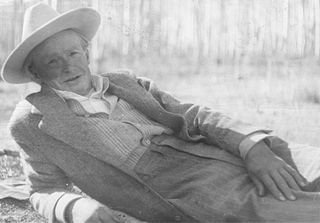
Andrew Michael Dasburg was an American modernist painter and "one of America's leading early exponents of cubism".

Raymond Jonson, was an American-born Modernist painter known for his paintings of the American Southwest. Born Carl Raymond Johnson, he originally signed his paintings C. Raymond Johnson, but later used Raymond Jonson, dropping the first initial and reverting to a more traditional spelling of his last name.
The University of Iowa Stanley Museum of Art is a visual arts institution that is part of the University of Iowa in Iowa City, Iowa, United States. It is accredited by the American Alliance of Museums.

Arthur Davison Ficke was an American poet, playwright, and expert of Japanese art. Ficke had a national reputation as "a poet's poet", and "one of America's most expert sonneteers". Under the alias Anne Knish, Ficke co-authored Spectra (1916). Intended as a spoof of the experimental verse which was fashionable at the time, the collection of strange poems unexpectedly caused a sensation among modernist critics which eclipsed Ficke's recognition as a traditional prose stylist. Ficke is also known for his relationship with poet Edna St. Vincent Millay.

Harrison Begay, also known as Haashké yah Níyá was a renowned Diné (Navajo) painter, printmaker, and illustrator. Begay specialized in watercolors, gouache, and silkscreen prints. At the time of his death in 2012, he was the last living, former student of Dorothy Dunn and Geronima C. Montoya at the Santa Fe Indian School. His work has won multiple awards and is exhibited in museums and private collections worldwide and he was among the most famous Diné artists of his generation.
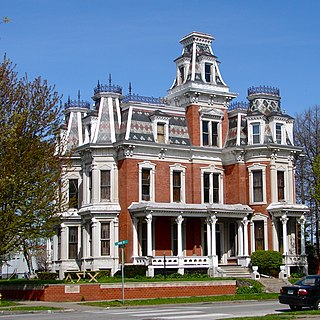
The J. Monroe Parker–Ficke House is a historic building located in the College Square Historic District in Davenport, Iowa, United States. The district was added to the National Register of Historic Places in 1983. The house was individually listed on the Davenport Register of Historic Properties in 2003. It has been owned and occupied by the Alpha chapter of Delta Sigma Chi since 1978.
RiverCenter is a convention center located in downtown Davenport, Iowa, United States. It is made up of two buildings sited on the north and south sides of East Third Street connected by a skywalk. The Adler Theatre is connected to the original section of the convention center on the north side of the complex.
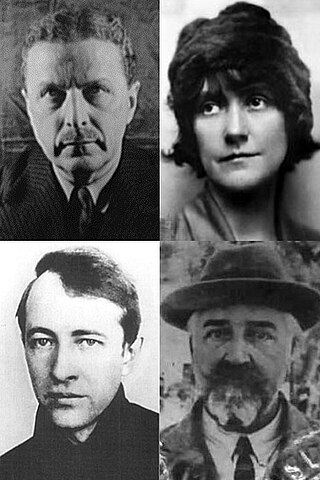
The Davenport Group is the informal name of a nationally known group of early modernist writers who first came together in Davenport, Iowa. In the early 20th century, they migrated east to New York City to assume leading roles in several important artistic and cultural developments in the 1910s and 1920s. Core members of the group are Susan Glaspell, her husband George Cram Cook, who were among the founders of the Provincetown Players; Floyd Dell, and Arthur Davison Ficke. Other Davenport writers associated with the group include Alice French, Charles Eugene Banks, Nilla Cram Cook, and Harry Hansen.
Serge Jolimeau is a Haitian metal sculptor born in Croix-des-Bouquets, Haiti in 1952. Renowned artists such as Georges Liautaud, Murat Brierre, the Louis-Juste brothers, and Gabriel Bien-Aimé were also from this same village.
Lloyd Henri Kiva New was a pioneer of modern Native American fashion design and a cofounder and president emeritus of the Institute of American Indian Arts (IAIA) in Santa Fe, New Mexico.
Rebecca Salsbury James (1891–1968) was a self-taught American painter, born in London, England of American parents who were traveling with the Buffalo Bill Wild West Show. She settled in New York City, where she married photographer Paul Strand. Following her divorce from Strand, James moved to Taos, New Mexico where she fell in with a group that included Mabel Dodge Luhan, Dorothy Brett, and Frieda Lawrence. In 1937 she married William James, a businessman from Denver, Colorado who was then operating the Kit Carson Trading Company in Taos. She remained in Taos until her death in 1968.
E Boyd was a painter, museum employee and scholar on the Spanish colonial art of New Mexico.
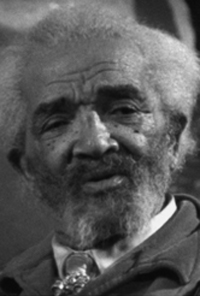
William L. Hawkins was an American folk artist whose work began receiving acclaim in the 1980s. Hawkins frequently used a variety of media, including discarded materials, to create his paintings.
Paul Claude Gardère was a Haitian-born, Brooklyn-based visual artist whose work explored "post-colonial history, cultural hybridization, race, and identity, in and beyond the Haitian diaspora." Gardère's work has been widely exhibited throughout the United States, including at institutions such as the Studio Museum in Harlem, the Figge Art Museum, Lehigh University, Pomona College Museum of Art, and the Jersey City Museum, and is included in a number of prominent institutional collections, including that of Thea Museum of Modern Art in New York, the Studio Museum in Harlem, the Brooklyn Museum, the New Orleans Museum of Art, Schomburg Center for Research in Black Culture, The Milwaukee Art Museum, the Figge Art Museum, the Columbus Museum, the Beinecke Library at Yale University and the Herbert F. Johnson Museum of Art at Cornell University.












